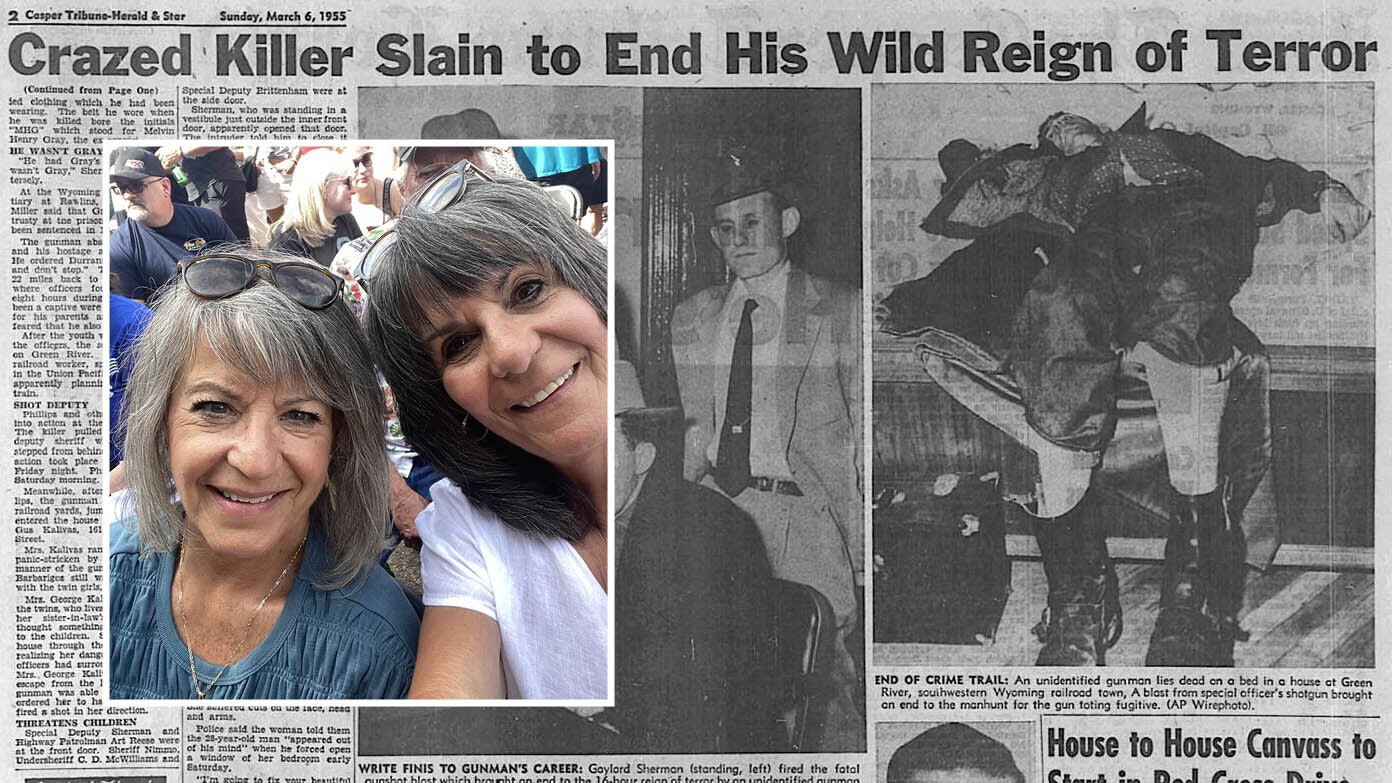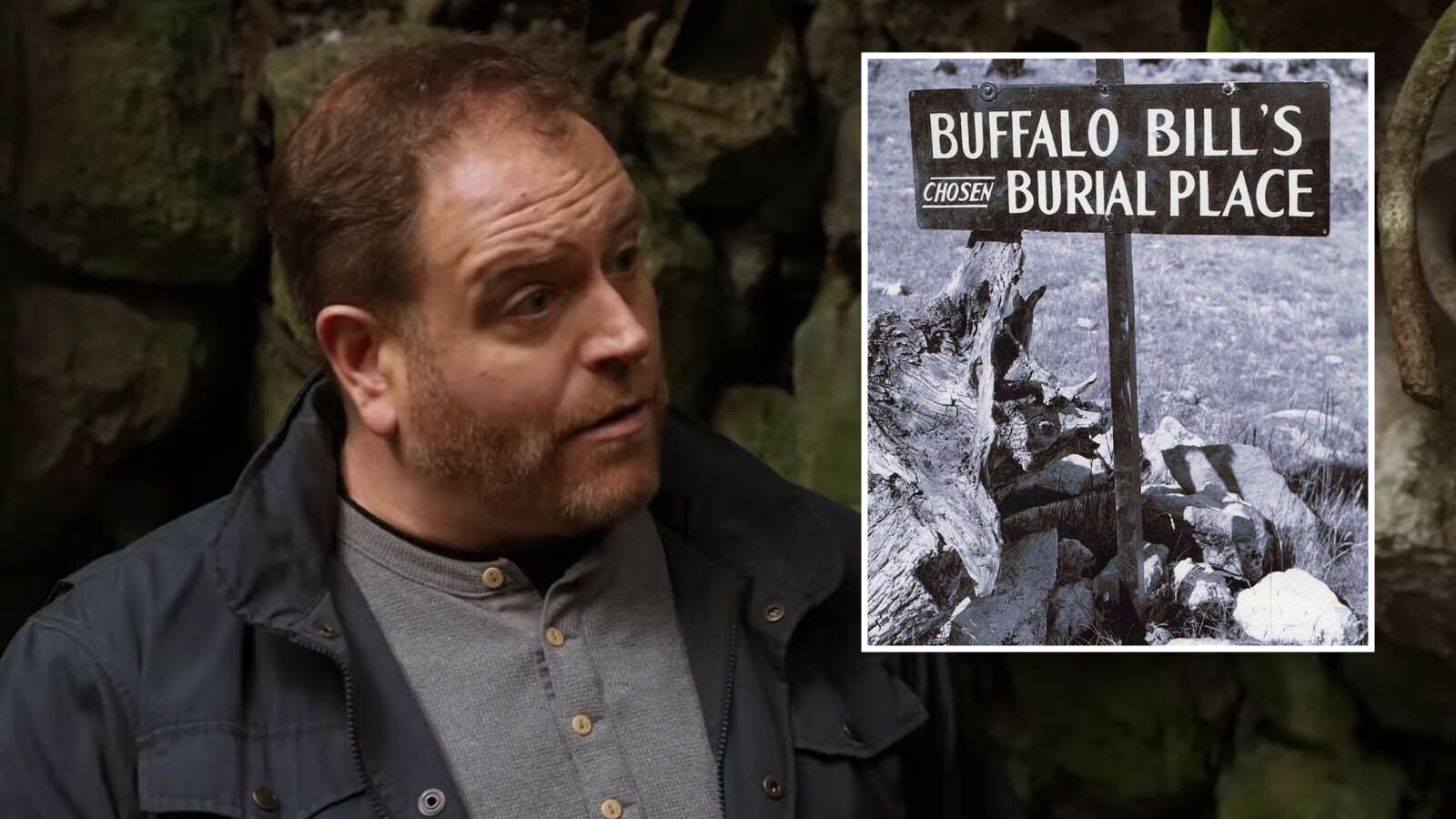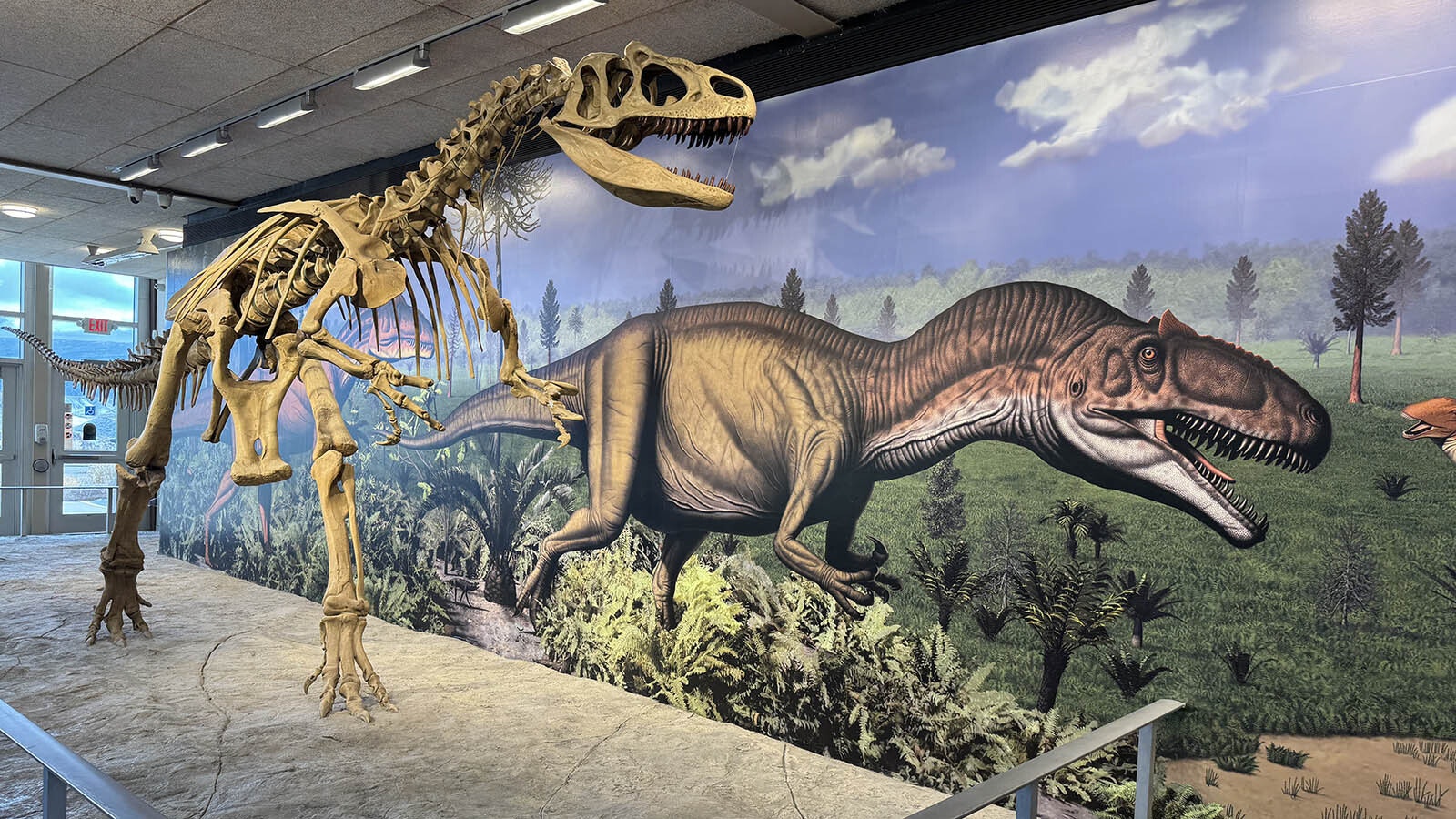On paper, the Clearwater fire burning in rugged terrain in northwest Wyoming about 11 miles west of Wapiti may not seem a major incident at less than 2,000 acres with slow growth.
But there are nearly 160 firefighting personnel working the fire that was sparked by lightning June 19. Their around-the-clock mission is to keep the fire from closing the East Entrance to Yellowstone National Park and Highway 14/16/20 from Cody to the park open. It hasn’t grown much in the past week, but remains only 10% contained.
At the Clearwater Campground, the smoldering smoke rose above the timberline, not quite making it to the blue sky above when Cowboy State Daily toured the area with the U.S. Forest Service on Wednesday.
The occasional flames could be seen from the highway when a single tree exploded into a blaze of fire. These trees were just across the north fork of the Shoshone River from the popular picnic spot, and fire crews are in position to ensure that the flames do not cross over the Shoshoni River. The campground remains closed as crews and sprinklers have been positioned to keep the fire from crossing the highway.
The first stop on the tour was at a lookout point above the Clearwater Campground where crews monitor and control the fire with drones.
Deploying Modern Warfare Against The Flames
The dangerous low and slow helicopter missions employed to battle wildfires, known by insiders as the “Deadman Curve,” are becoming a thing of the past. The helicopters that would fly just above the fiery tree lines to give reports to ground crews and strategically drop ignition balls are being replaced by drones.
“If the drone crashes, there is no loss of life,” said Daniel Palidino, a drone operator for the U.S. Forest Service. “Usually, we can get 200 feet above the tree tops.”
For three years, Paladino has been flying drones from his home base in Durango, Colorado. From the Arctic Circle to Southern New Mexico, he travels around the U.S. fighting wildfires with the drone.
At the parking lot overlooking the Clearwater Campground with the air hazy from plumes of smoke, a small pad has been set up with a large type 3 drone. Small white-and-red balls are loaded into the drone, which is also outfitted with an infrared camera.
“The balls are called dragon eggs — aerial ignition spheres — and the purpose for that is for conducting burn out operations,” Paladino explains. “We are removing unburned fuels between a control feature and the main body of the fire to increase the chances of success in containment of the fire.”
Wind conditions Wednesday prevented the drone from going airborne, but there was a two-man crew was on standby. It was their last day of a 14-day rotation and another drone crew was arriving to take their place.
“We managed to bring the fire down to gain some containment,” Paladino said. “We also provided intel for the crew. The infrared sensor allows us to see through the heavy smoke to find spot fires and to provide intel to the ground for fire behavior as well as identifying spot fires.”
The information is updated into a digital map that crews can access on their phones. The drone operators also radio in information to ground crews to help direct them to the most strategic burn points in their continued efforts to contain the blaze.
Protecting The Ranches And Lodges
“Our top priority remains protecting the public and our crews,” U.S. Forest Service spokesperson Ranae Pape said. “We are also dedicated to protecting the structures in the area.”
The Historic UXU Ranch is one of those priorities.
The lodge, built in 1929, is situated on the south side of the river where the fire has been erratically moving from ridge to ridge and jumping from tree to tree. Located 17 miles from Yellowstone National Park, the property consists of a main lodge, several cabins and corrals. Occasionally, the smoke, more reminiscent of a camp fire rather than a blazing wildfire, can be smelled on the air as business as usual is conducted at the dude ranch.
“Definitely protecting the structures is a huge priority,” said Casey McQuiston, district ranger for the Shoshone National Forest, as he walked through the property, gesturing at the clear forest ground. “Crews came in and cut down some of the smaller material and put it into a wood chipper and removed the live fuels.”
Crews also cleared away brush and trimmed all the low-hanging branches near the buildings. Smaller trees were removed and the building gutters were cleared of debris. Dried needles were brushed off the roof and disposed of and firebreaks were raked into the soil on the outer perimeter of the property.
Several 20-person work crews worked long hours putting up sprinklers around the UXU Ranch. The sprinklers are placed strategically throughout the property including on the bridge over the Shoshone River leading to the main lodge. Two portable reservoirs full of water stand ready to pump water into this system.
"If the fire were to move this way, it makes a much higher chance in the survival of this property,” McQuiston said. “We are also showing the staff things they need to do to minimize the fire danger.”
Linda McCoy, a tour guide at the Buffalo Bill Historic Lodge, said it was business as usual.
“We can see the smoke from the highway,” she said. “But it doesn’t affect what we are doing. We are 27 miles away from the fire and they seem to have a good handle on it. The UXU Ranch is the only one we are really concerned for and crews have been awesome with helping them put preventive measures in place.”
At the UXU Ranch, tourists and workers also seemed unaffected by the wildfire as they continue on with their daily routine as usual. Dinner was being made and excursions going on as planned as the Clearwater fire continued to burn.
Contact Jackie Dorothy at jackie@cowboystatedaily.com
Jackie Dorothy can be reached at jackie@cowboystatedaily.com.












